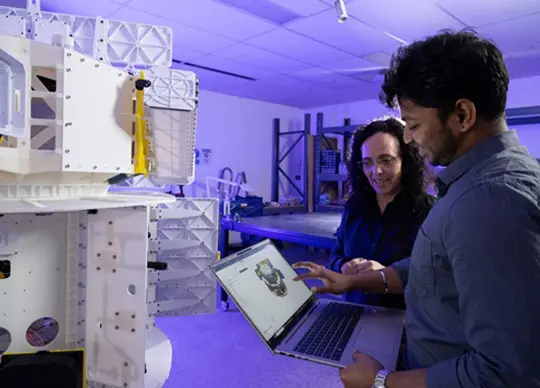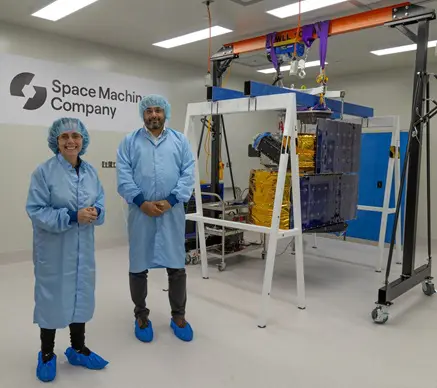
Australian space on-orbit services and logistics startup Space Machines Company (SMC) has used a suite of products from Siemens Xcelerator portfolio of industry software to design and build the Optimus Orbital servicing Vehicle (OSV), one of the largest commercial spacecrafts being designed, manufactured, and assembled in Australia.
The 270kg Optimus will be launched by a SpaceX rocket from the United States to help taxi commercial satellites into their orbital paths around Earth and beyond – providing roadside assistance to satellites orbiting in space. Optimus’ main purpose will be to service, maintain, repair, and extend the life of other satellites on orbit.
The use of Siemens’ software for design and modeling, thermo-mechanical elements simulation and analyses and product lifecycle management has helped SMC save costs and time while delivering productivity gains for teams working on Optimus at University of Technology Sydney’s Tech Lab.
Siemens’ NX software is being used for design and modeling, Simcenter software for thermo-mechanical elements simulation and analyses, and Teamcenter® X software as a service (SaaS) for product lifecycle management (PLM).
 Speaking on the announcement, Rajat Kulshrestha, CEO of SMC said, “On-orbit servicing and logistics is the new frontier in space innovation. Many critical aspects of our daily lives, such as banking, weather forecasting and global communications are impacted by the ability of satellites to deliver these critical services. There are over 7,000 active satellites orbiting Earth. These satellites, and new ones coming into orbit, need a sustainable and safe operating environment. We deliver responsive and affordable on-orbit servicing and security solutions to customers.
Speaking on the announcement, Rajat Kulshrestha, CEO of SMC said, “On-orbit servicing and logistics is the new frontier in space innovation. Many critical aspects of our daily lives, such as banking, weather forecasting and global communications are impacted by the ability of satellites to deliver these critical services. There are over 7,000 active satellites orbiting Earth. These satellites, and new ones coming into orbit, need a sustainable and safe operating environment. We deliver responsive and affordable on-orbit servicing and security solutions to customers.
“To do what we do, we need the right software that is agile in a fast-paced environment and can scale as we do. Siemens’ software has been critical in our ability to reduce design and development iterations without compromising on mission objectives. It’s helped us create one unified digital environment and allowed us to rapidly prototype on the digital twin, helping us understand how Optimus will behave in the harsh environment of space.”
 Apart from the design and manufacturing phase, SMC’s hardware and software undergo rigorous testing phases which calls for a robust PLM system. Teamcenter X helps with everything from quick design changes, running simulations and validation, through to manufacturing and final assembly – all on the digital twin.
Apart from the design and manufacturing phase, SMC’s hardware and software undergo rigorous testing phases which calls for a robust PLM system. Teamcenter X helps with everything from quick design changes, running simulations and validation, through to manufacturing and final assembly – all on the digital twin.
Samantha Murray, Vice President and Managing Director of Siemens Digital Industries Software, Australia and New Zealand said, “Space is one of the most innovative industries in Australia right now. Siemens software in enabling organisations of all sizes to innovate and develop solutions that will ultimately play a critical role in our daily lives. “I’m proud to see how Space Machines have used our software to push the boundaries of space logistics and get to the forefront of Australia’s space industry. As the space industry scales up and becomes part of a powerful ecosystem, software is the key enabler that helps level the playing field for all.”
Siemens’ software is also being used by other leading space technology companies in the region including Hypersonix and Gilmour Space Technologies in Australia, as well as Rocket Lab in New Zealand.





